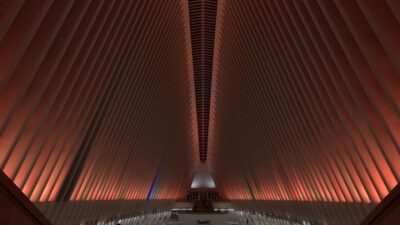In an era where technology has become an integral part of our daily lives, mixed reality (MR) stands out as one of the most captivating innovations. Merging the digital and physical worlds, MR allows users to interact with digital content in real-time as if it were part of their physical environment. But what exactly is mixed reality, and how does it work? Let’s dive into the technology that makes this fascinating experience a reality.
Understanding Mixed Reality
Mixed reality is a blend of augmented reality (AR) and virtual reality (VR). While AR overlays digital information on the real world and VR immerses users in a fully digital environment, mixed reality creates an interactive experience where physical and digital objects coexist and can interact with each other. This allows for more immersive and meaningful experiences, whether in gaming, training, healthcare, or education.
Key Technologies Behind Mixed Reality
-
Sensors and Cameras
Central to MR systems are sensors and cameras that capture the physical environment. These devices map the space around the user, detecting surfaces, objects, and even people. Commonly used sensors include depth sensors, LiDAR, and RGB cameras. By analyzing this data, the system can understand the physical world and determine how to overlay digital elements appropriately. -
Computer Vision
Computer vision algorithms process the data gathered by cameras and sensors, allowing the system to recognize and interpret the surrounding environment. This technology enables MR applications to understand the spatial relationships between digital and physical objects, ensuring that digital elements behave realistically in relation to the user’s environment. -
Spatial Mapping
The spatial mapping process creates a 3D model of the user’s surroundings. By integrating spatial awareness, MR devices can accurately position virtual objects within the physical space. This technology is vital for ensuring that digital overlays appear realistic and can respond to user interactions. -
Display Technology
Various display technologies, such as HoloLens 2’s waveguide displays or head-mounted displays (HMDs), are employed to present MR experiences. These displays project digital images onto the real world, often integrating transparency to allow users to see both the physical and digital elements simultaneously. High-resolution displays enhance the realism of digital objects, making them appear more lifelike. -
Input Methods
Interaction in MR environments requires intuitive input methods. These can include hand tracking, gesture recognition, voice commands, and motion controllers. Advanced technologies, like haptic feedback, can simulate the sensation of touch, enhancing user immersion and interaction. - Artificial Intelligence (AI)
AI plays a crucial role by helping MR systems understand context and adapt to user behavior. Machine learning algorithms can analyze how users interact with their environment and improve the precision of object placement and interaction over time.
Applications of Mixed Reality
Mixed reality is revolutionizing various industries:
-
Gaming: Titles like "Pokémon GO" and "Microsoft’s Halo: Recruit" illustrate how MR can transform the gaming experience by blending digital and real-world elements.
-
Education: MR provides a dynamic learning environment where students can manipulate 3D models of complex biological structures or historical artifacts, enhancing understanding through experiential learning.
-
Healthcare: Surgeons can use MR for visualization during operations, projecting patient data or anatomy onto the physical body to improve precision and outcomes.
-
Manufacturing and Design: Engineers can visualize virtual prototypes in real-world settings, facilitating collaboration and reducing design hitches.
- Real Estate and Architecture: Potential buyers can take virtual walkthroughs of properties that integrate digital furniture and decor, leading to better decision-making.
The Future of Mixed Reality
As technology evolves, the potential for mixed reality keeps expanding. Improvements in hardware performance, battery life, and processing power will drive more sophisticated MR experiences. With the introduction of 5G technology, real-time data processing will become faster and more reliable, enabling richer interactions.
Moreover, as more developers create MR applications, the ecosystem will grow. Platforms like Microsoft’s Mesh are paving the way for shared MR experiences, enhancing social interaction in digital spaces.
Conclusion
The magic of mixed reality lies in its ability to blend the physical and digital worlds seamlessly. Powered by groundbreaking technologies, MR offers transformative experiences across numerous sectors, enhancing creativity, collaboration, and understanding. As we continue to explore the boundaries of this technology, the possibilities are virtually limitless—making the future of mixed reality an exhilarating prospect for all.



